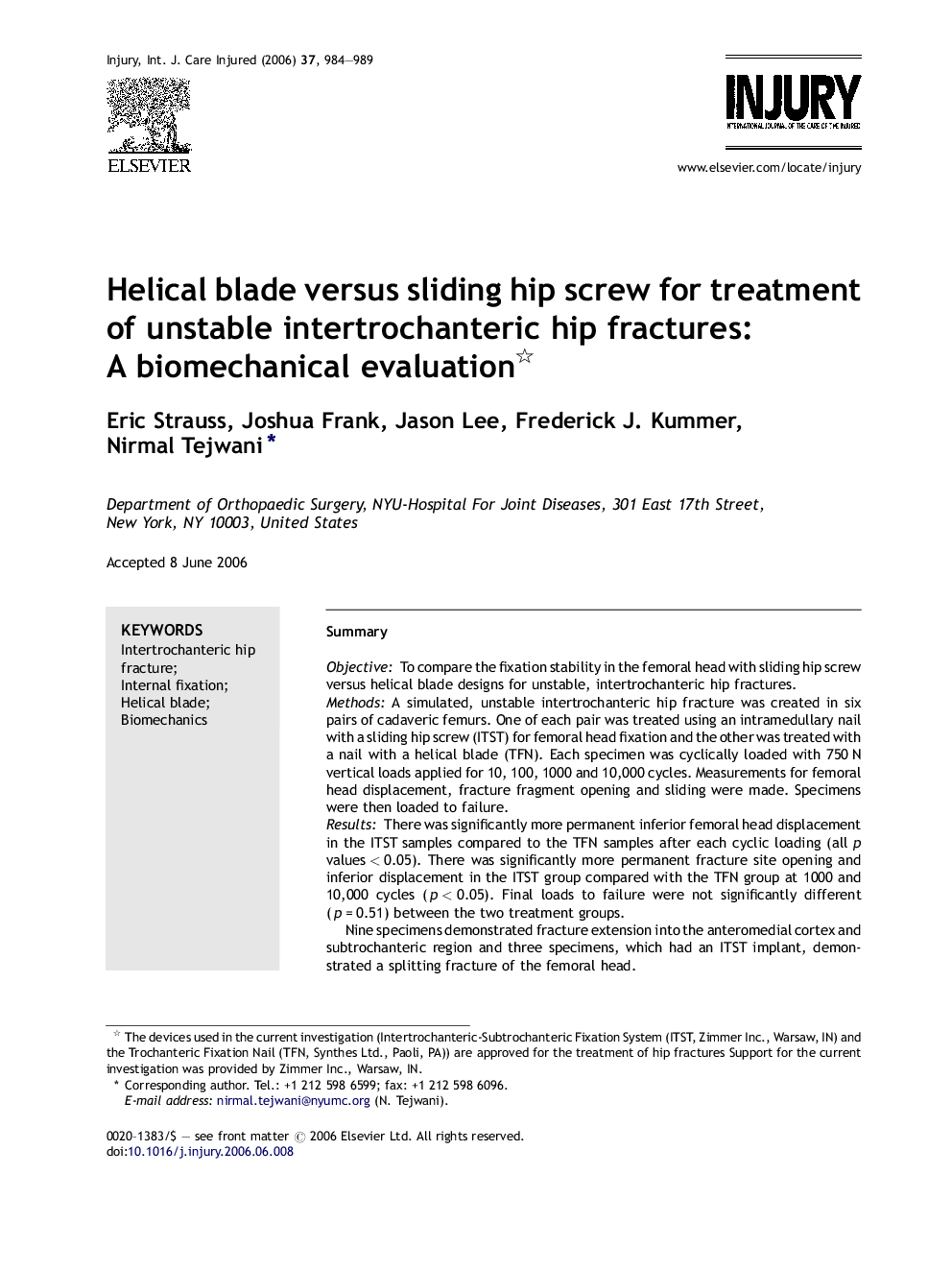| Article ID | Journal | Published Year | Pages | File Type |
|---|---|---|---|---|
| 3242768 | Injury | 2006 | 6 Pages |
SummaryObjectiveTo compare the fixation stability in the femoral head with sliding hip screw versus helical blade designs for unstable, intertrochanteric hip fractures.MethodsA simulated, unstable intertrochanteric hip fracture was created in six pairs of cadaveric femurs. One of each pair was treated using an intramedullary nail with a sliding hip screw (ITST) for femoral head fixation and the other was treated with a nail with a helical blade (TFN). Each specimen was cyclically loaded with 750 N vertical loads applied for 10, 100, 1000 and 10,000 cycles. Measurements for femoral head displacement, fracture fragment opening and sliding were made. Specimens were then loaded to failure.ResultsThere was significantly more permanent inferior femoral head displacement in the ITST samples compared to the TFN samples after each cyclic loading (all p values < 0.05). There was significantly more permanent fracture site opening and inferior displacement in the ITST group compared with the TFN group at 1000 and 10,000 cycles (p < 0.05). Final loads to failure were not significantly different (p = 0.51) between the two treatment groups.Nine specimens demonstrated fracture extension into the anteromedial cortex and subtrochanteric region and three specimens, which had an ITST implant, demonstrated a splitting fracture of the femoral head.ConclusionThis study demonstrated that fixation of the femoral head with a helical blade was biomechanically superior to fixation with a standard sliding hip screw in a cadaveric, unstable intertrochanteric hip fracture model.
